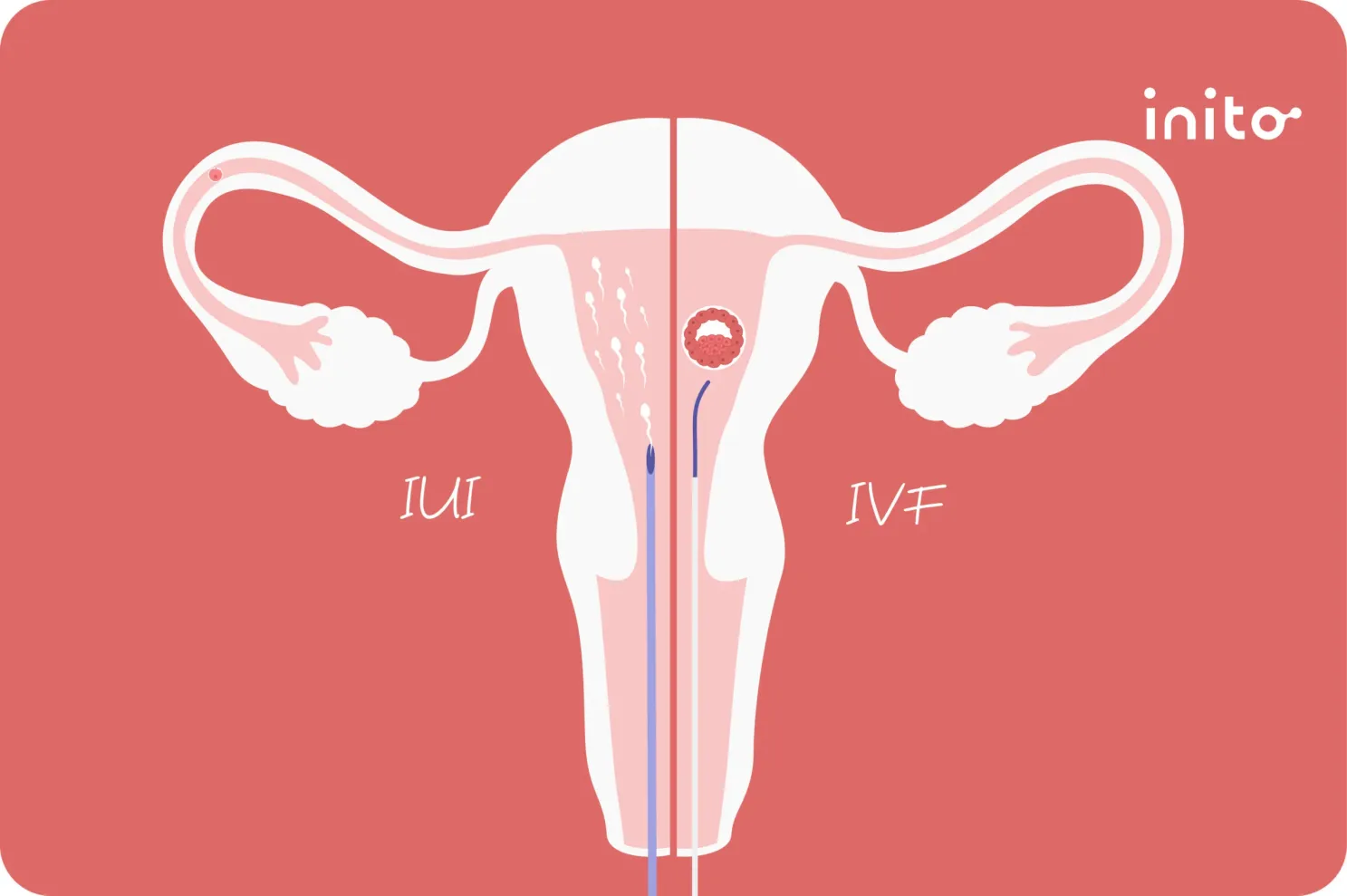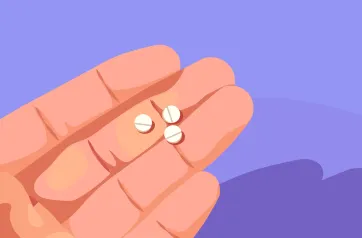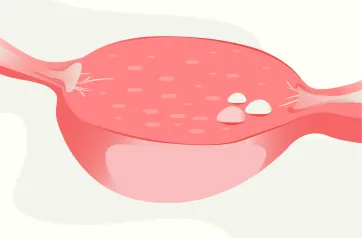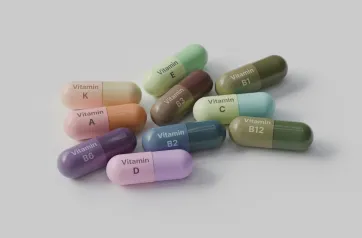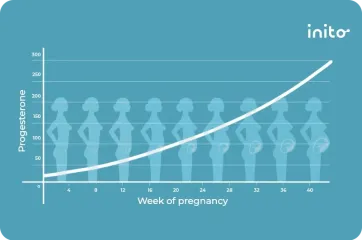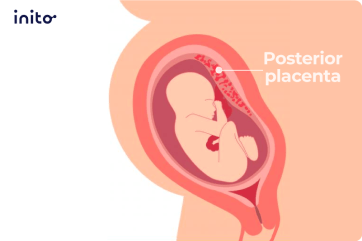Content table
Thinking about Intrauterine Insemination (IUI)?
You’re probably weighing the pros and cons, and wondering if it’s worth it. And an essential part of your decision is likely your chances of success with this fertility treatment.
The truth is that IUI success rates can vary, depending on multiple factors. But to give you a general idea, success rates range from 8.9% to 14.4% per cycle.
Several factors can influence this range, including age. In this article, we’ll share info about the success rate of IUI, how it compares to IVF, and tips to increase your IUI success rate so that you can make an informed decision about whether this fertility treatment is right for you.
Key Takeaways
- IUI success rates vary based on several factors. Age, underlying infertility issues, sperm quality, ovarian stimulation, fallopian tube blockage, and the number of cycles all need to be considered.
- Younger women usually have a higher IUI success rate that declines with age.
- Age plays a role in male factor infertility, too.
- When it comes to ovulation induction drugs, the success rate of IUI with letrozole is the highest. That’s because this medication has a lower multiple pregnancy risk.
- Fallopian tube blockages closer to the uterus have a higher IUI percentage of success than those near the ovary.
- The optimal number of IUI cycles is 4-5. But this varies depending on age.
- Women over the age of 40 should not exceed 3 or 4 repeated IUI cycles.
- If IUI is unsuccessful after multiple rounds, consider IVF or other fertility drugs.
- Each fertility journey is unique. Talk to your healthcare provider about your individual options.
What Is IUI?
IUI is short for Intrauterine Insemination. It’s a procedure that involves placing the sperm directly into the woman’s uterus. This bypasses the vagina and cervix, which can be challenging areas for sperm to navigate.
IUI gives the sperm a better chance of reaching the fallopian tubes and fertilizing an egg.
Know more: Understanding the IUI Procedure: A Complete Overview
IUI Success Rates
A cycle that results in a live birth is considered an “IUI success.”
As we mentioned earlier, the IUI treatment success rate depends on several factors. They include:
- Age
- Underlying cause of infertility
- Sperm quality
- Ovarian stimulation
- protocol
- Type of fallopian tube blockage
- Number of intrauterine insemination cycles
Each of these factors plays a role in determining your exact odds of success with IUI.
Let’s look at each of them in more detail.
Factors That Affect IUI Success Rates
Female age
Age is not the sole determinant of fertility success, but it does affect your chances of pregnancy. That includes intrauterine insemination. That’s because egg quality and the chances of IUI working decrease with a woman’s age. Additionally, the risk of miscarriage is also four times higher for women over 42, and it keeps increasing as you age.
Let’s take a look at some numbers:
| Age | IUI success rate (%) |
| 30-34 | 14.5 |
| 35-39 | 12.6 |
| 49-44 | 10.0 |
| >45 | 8.9 |
Ideally, the earlier you start IUI treatment, the better. However, don’t let that deter you. Regardless of your age during the IUI process, there are other factors at work. Let’s take a look at them.
Male age
Most of the fertility talk around age is focused on women. But a man’s age can impact IUI success rates as well.
Studies found that as men’s age increased, miscarriage rates increased too. That’s because, as a man ages, there is increased sperm DNA fragmentation. There’s an increase in the number of immotile or dead sperm present in the semen. This reduces the overall quality of the sperm, making it harder to get pregnant or sustain a pregnancy.
One study found that the miscarriage rate went from 13.7% for men under 30 to 32.4% for men over 45.
Underlying cause of infertility
The success of the IUI procedure is also reliant upon whether underlying causes are involved. There may be unexpected reasons why your IUI success rates aren’t ideal, such as anovulation.
One study looked at infertile women with anovulation or other unexplained factors. It found that these women had higher IUI success rates than those with endometriosis, blocked fallopian tubes, or uterine abnormalities.
In the case of anovulation or issues with egg development, ovarian stimulation paired with IUI treatment can help boost your chances of success.
To rule out anovulation, add Inito Fertility Monitor to your toolbox.
Inito measures all fertility hormones key to tracking your fertile window:
– LH (Luteinizing Hormone)
– Estrogen
– PdG (urine metabolite of progesterone), and
– FSH (Follicle-Stimulating Hormone)
Inito measures all the hormone levels on a single test strip. While LH, estrogen, and FSH are crucial to track your fertile window, PdG helps confirm ovulation, which is key to getting pregnant.
Unfortunately, the story is more complex when it comes to physical fertility struggles (i.e. infertility related to fallopian tubes or congenital uterine anomalies) or conditions such as endometriosis.
IUI alone typically can’t serve as a solution. We understand how frustrating this can be. Please talk with your doctor to explore other options to help you achieve a healthy pregnancy.
Know more: Your Guide to Getting Pregnant With Endometriosis
Sperm parameters
Sperm plays a prominent (and often overlooked) role in fertility, especially when it comes to intrauterine insemination.
The quality of a man’s sperm can affect the IUI procedure success rates.
One study further exemplifies this. It found that a Total Progressive Motile Sperm Count (TPMSC) of over 15 million had a very high IUI success rate (a whopping 76.1%!). This refers to the number of swimming sperm that are moving forward progressively.
The numbers dropped drastically for a TPMSC of 5-15 million. And even more for less than 5 million.
| TPMSC (millions) | Pregnancy rate (%) |
| <5 | 8.2 |
| 5-15 | 15.7 |
| ≥15 | 76.1 |
Another study confirmed these findings. It also revealed that pregnancy rates were highest with a Total Motile Sperm Count (TMSC) greater than nine. TMSC means the number of sperm that are actually swimming.
The lower the TMSC count went from there, the lower the IUI success, a.k.a. pregnancy rate.
| Total motile sperm count (millions) | Pregnancy rate (%) |
| <0.25 | 4.18% |
| 0.25–0.49 | 4.11% |
| 0.50–0.99 | 3.67% |
| 1.00–1.99 | 7.45% |
| 2.00–3.99 | 10.13% |
| 4.00–4.99 | 11.63% |
| 5.00–5.99 | 12.87% |
| 6.00–6.99 | 13.93% |
| 7.00–8.99 | 14.33% |
| ≥9 | 16.70% |
Note: The sperm count in these studies differs from what you’d see in a normal semen analysis. That’s because the sperm are washed for the IUI process, and that reduces the sperm count.
To accurately track, you need the original sperm count and the post-wash count on the day of IUI.
Ovarian stimulation protocol
The type of ovarian stimulation medication you choose can affect the success rate of IUI.
A study on women with PCOS looked into this. It found that live birth rates averaged about the same with the use of clomiphene citrate, letrozole, and gonadotropins. However, let’s examine the details further.
Having multiple eggs released at once increases your chances of twins or triplets. But that does not boost your chances of having a healthy baby.
So, it’s best to err on the safe side and only have one egg released at a time. Studies show that letrozole is the best for this, so it’s the top choice for women TTC with IUI.
Know more: Letrozole for Fertility
Type of fallopian tube blockage
Did you know that it only takes one fallopian tube to get pregnant? That means if one of them is blocked, you can still conceive. However, the location of the blockage is crucial for achieving successful intrauterine insemination results.
The pregnancy rate for women with a blockage that’s close to the uterus (proximal) is about the same as that of women with unexplained fertility (44.7%).
But for those whose blockage is closer to the ovary (distal)?
The chances of a successful IUI were lower (11.7% vs. 44.7%). This may be because proximal tubal blockages are relatively easier to treat, while distal blockages require more complex surgery.
Number of IUI cycles
There is a sweet spot when it comes to the number of cycles that result in the greatest chances of success.
And that sweet spot is between 4 and 5 cycles.
| Number of IUI cycles | 1 | 2 | 3 | 4 | 5 | 6 | 7 |
| Pregnancy rate | 11.16 | 10.74 | 7.82 | 10.0 | 10.0 | 10.26 | 7.69 |
But the rates also vary depending on your age. One study examined this in more detail and found a decline in pregnancy rates with increasing age. However, for the first three cycles, the pregnancy rates for women between 40 and 41 years did not differ from those aged 35-39.
Overall, pregnancy rates remained constant in women up to 40 years of age, even after multiple cycles.
Everyone’s fertility journey is unique. Your fertility specialist is the best person to guide you, and they may suggest other options such as In Vitro Fertilization (IVF) or other fertility drugs.
Now, let’s explore how IUI compares to IVF in terms of success rates
How Does IUI Compare to IVF Success Rates?
With all this talk about the success of IUI, you may be asking, “What about IVF?”
Generally, speaking, in vitro fertilization has a much higher success rate than IUI. Successful IUI rates vary from 8.9% to 14.4% per cycle (depending on age).
IVF success rates, on the other hand, range from 2.9% to 44.5%. Those numbers may make you want to skip IUI and go right to IVF. But before you do, know that the success rate is only one part of the fertility treatment option picture.
There are other things you need to consider when deciding whether IUI or IVF is right for you. They include:
- Cost
- Side effects
- Time to pregnancy
- Rate of multiples
- Level of invasiveness
Know more: IUI vs. IVF: Which Fertility Treatment is Better for You?
Regardless of whether you choose IUI or IVF, there are things you can do to increase your chances of success.
How to Increase My Chances of IUI Success?
Fertility treatments can be a great tool. But overall health plays an undeniably crucial role in conception.
Here are some lifestyle choices that can help your fertility journey and set you up for success.
Diet
Eat a healthy, well-balanced diet that has a variety of nutrients in it. You want to focus on whole, unprocessed foods as much as possible.
Exercise
Exercise moderately and regularly. You don’t need to (and shouldn’t) spend 2 hours pushing yourself hard at the gym. Even 20 minutes of a light workout is enough to keep you healthy.
Stress management
High cortisol levels can impact your ability to get pregnant. So focus on keeping your stress levels down. Go on walks, meditate, do yoga, and keep your screen time at a minimum (especially right before bed and upon waking up).
Sleep
Good quality sleep is imperative at every life stage, especially when TTC. Aim for at least 7-9 hours a night (and no, scrolling on your phone in bed is not resting!)
Cycle tracking
Knowing your fertile window and when you’re ovulating is crucial when trying to conceive. Inito is the best way to track your cycle, understand your hormones, and confirm ovulation.
Now that you’ve explored how to boost your chances, it’s time to take a look at how many rounds of IUI may be right for you.
We understand this fertility process can be difficult. So we are sharing what to consider when making your decision about the number of intrauterine insemination cycles.
How Many IUI Cycles Should You Do Before Moving On?
There is a limit to how many cycles of IUI your body should go through, and your doctor will agree.
Studies suggest that women between 30 and 40 may benefit from up to six insemination cycles. For women over 40, the maximum number of cycles is 3. After that, the chances of success decrease.
If you’ve completed the recommended cycles of IUI without achieving pregnancy, know that IVF and other fertility options offer hope for many couples.
The road to fertility is not always an easy one, but know that you are not alone. Reach out to your friends, family, and loved ones to support you during this time. Also, consider joining our Facebook group to connect with other women going through the same journey with whom you can share stories and feel supported.

FAQs
The number of insemination rounds it takes to get pregnant depends on many factors. There is no one-size-fits-all. It depends on female and male age, the underlying cause of infertility, sperm health, and the type of ovarian stimulation protocol.
IUI success is more likely to be achieved with a nutritious diet, regular exercise, stress management, and quality sleep.
The success rate of IUI on the first try varies for every woman. It depends on the factors we mentioned above: female age, male age, the underlying cause of infertility, sperm health, and the ovarian stimulation protocol.
One study found that 11.16% of women got pregnant after their first IUI procedure.
In one study, the success rate of getting pregnant through intrauterine insemination on the first try was around 11.1%. Another study found that the success rate for any given IUI cycle is somewhere between 10 – 15%.
Your chance of having success with IUI on the first try depends on a lot of factors. A few of these include: maternal age, paternal age, sperm health, and any underlying fertility conditions.
Yes. The one caveat is that the chances of conceiving multiples increase with IUI. (This happens because medications that you might take as part of your treatment with IUI cause you to release more than one egg.) Twins and higher-order multiple pregnancies come with additional complications and risks that could affect the health of the babies.
Based on one study, the highest pregnancy rate was observed in the first cycle (at 11.1%). But with IUI, your chances of getting pregnant are cumulative up to a point. Undergoing up to 3-5 cycles may give you the highest odds of success. But after 5 cycles, the success rate seems to fall off, meaning other fertility treatment options should be considered at that point.
There’s no set amount of cycles it takes for IUI to work. It all depends on the patient undergoing treatment as well as their age, overall health, and fertility. That said, the sweet spot for whether or not you will have success with IUI seems to be between 4 – 5 cycles. After 5 cycles, the chances of getting pregnant via IUI drop off.
Was this article helpful?
- Effect of maternal and paternal age on pregnancy and miscarriage rates after intrauterine insemination | RBM Online
- Success Rate of Inseminations Dependent on Maternal Age? An Analysis of 4246 Insemination Cycles | Thieme
- Sperm DNA fragmentation index affect pregnancy outcomes and offspring safety in assisted reproductive technology | Nature
- Predicting success of intrauterine insemination using a clinically based scoring system | NIH
- Clarifying the relationship between total motile sperm counts and intrauterine insemination pregnancy rates | Fertility and Sterility
- Ovulation induction and intrauterine insemination in infertile women with polycystic ovary syndrome: A comparison of drugs | European Journal of Obstetrics & Gynecology and Reproductive Biology
- Assessment of multiple intrauterine gestations from ovarian stimulation (AMIGOS) trial: baseline characteristics | Fertility and Sterility
- Success Rate of Inseminations Dependent on Maternal Age? An Analysis of 4246 Insemination Cycles | NIH




